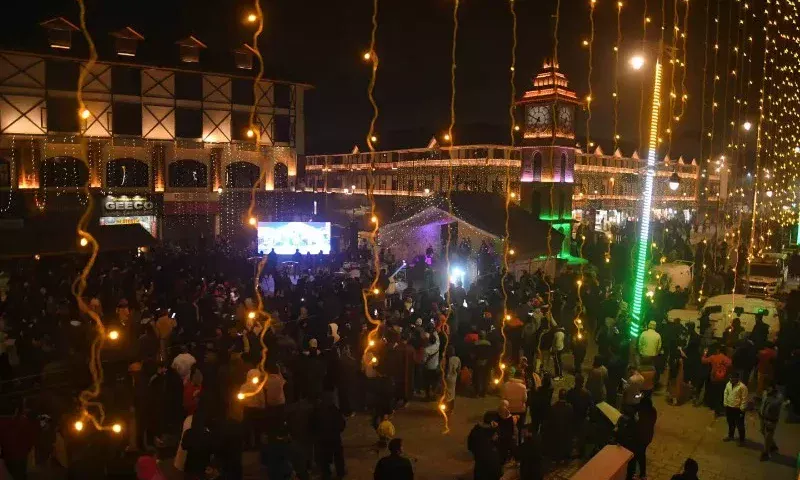Amarnath Yatra 2020: The annual pilgrimage will begin on July 21 and end on August 3, thus making it the shortest ever Yatra till date. According to some reports, the yatra might be carried out by helicopters.
Will the Indian government go-ahead with Amarnath Yatra (pilgrimage) 2020 despite the global pandemic? The annual Amarnath Yatra draws more than 600,000 people to the Kashmir Valley but critics have questioned why is India going ahead with annual pilgrimage?
Due to the recent surge in COVID-19, an increasing number of health experts have expressed concern over the hosting of Amarnath Yatra – the annual Hindu pilgrimage this year. The concern expressed is genuine since the pilgrimage draws pilgrims in large numbers which would make it difficult to maintain social distancing norms.
Experts talking with us believe that during a global pandemic, the Indian government and the Amarnath Shrine Board should cancel or drastically limit the number of people visiting the pilgrimage.
The decision-makers should follow the footsteps of Maharashtra and the Saudi government which cancelled the Lalbaugcha Ganesh festival and severely limited Hajj pilgrimage respectively.
As per reports, the government of India plans to shorten the 45-day long Yatra to 2 weeks keeping in mind the situation. The Home Department on Thursday deputed six police officials as deputy camp directors of various camps en route to Amarnath Yatra – 2020.
The annual pilgrimage will begin on July 21 and end on August 3, thus making it the shortest ever Yatra till date. According to some reports, the yatra might be carried out by helicopters.
In addition to coronavirus fears, there is also concern about the security situation in the region. The Ministry of Home Affairs and Jammu Kashmir Administration reviewed the increased border shelling by Pakistan and rising unrest in Jammu and Kashmir.
Lt. Governor GC Murmu also met the Defence Minister Rajnath Singh and briefed him about the situation. The armed forces operating in the region remain confident about providing security to the pilgrims.
So far, the deadly coronavirus has infected more than 625,000 people and killed 18,000+ people in India. In Jammu and Kashmir, home of the Amarnath shrine, more than 7,500 infections have been recorded with casualties numbering more than 100.
Amarnath Yatra: A Quick Analysis
Amarnath Yatra is actually a pilgrimage to the holy Amarnath cave for Hindus. This cave is situated at an elevation of 3,888 meters above sea level. It can be reached only by foot or by a mule. This distance from Pahalgam is about 46 kilometers, which is to be completed on foot and a return journey takes around five days.
There is another route from the Baltal, which is just 16 kilometres away from the Amarnath cave. The trek from Baltal to the Amarnath cave is quite difficult and thus challenging to trek. This cave is covered with snow throughout the year, but for a short time during the summer, the Amarnath cave becomes accessible to the devotees. The journey begins in the month of Shravan and Amarnath Yatra is considered a must for devotees of Lord Shiva.
Importance of the Amarnath Yatra
The water droplet drips from the roof of this cave, accumulating on a freezing point, shapes a giant angle shaped that Hindus consider to be the form of Shivling. The Shivling is a representation of the Hindu deity, Lord Shiva. In Hinduism, the Shivling is seen as a representation of the energy, and Lord Shiva himself. The Shivling is usually represented beside the yoni or source a symbol of the goddess or of Shakti (power).
From June to August, many people throng the Amarnath Cave and undertake an arduous journey to pray to Lord Shiva. A figure of Ganesh (son of Lord Shiva) and Parvati (wife of Lord Shiva) is also seen in the snow. Due to this, millions of Hindus across the length and breadth of the world register themselves for Amarnath Yatra every year.
For Booking / More Information About Amarnath Yatra
Please Visit Us at : www.KashmirTravels.in Or Call Us At: 91 97960 24 365




